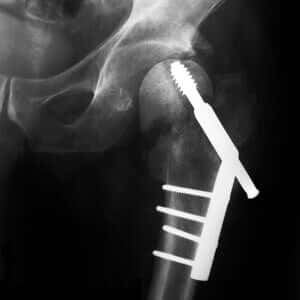
FDA researchers are questioning the long-term benefits of bone drugs like Actonel, Boniva, Reclast and Fosamax (alendronate). These bisphosphonate medications are prescribed to build bone and reduce the risk of fractures. According to the FDA, “more than 150 million prescriptions were dispensed to outpatients between 2005 and 2009.”
It’s hardly any wonder the drugs have become so popular. Anyone who watches television is likely to have seen Sally Field speak convincingly about the benefits of Boniva and how it can help stop and reverse bone loss. Reclast commercials are equally convincing. The actors look so healthy and happy it is hardly any wonder that people contact their doctors to get a prescription.
So, how good are these drugs really, especially when it comes to long-term use? The study, published in the New England Journal of Medicine (May 9, 2012), suggests that after the first three to five years, these drugs offer little, if any, reduced risk of fractures. And reducing fractures is the whole point of the exercise. Just improving a score on a bone mineral density test is not enough to warrant long-term use.
The FDA analysis also pointed out that these drugs may have some disconcerting rare risks: Atypical femur fractures [thigh bone breaks], osteonecrosis of the jaw [jaw bone death] and esophageal cancer.
Other possible side effects of this class of medications include:
- Joint pain and stiffness
- Back pain
- Digestive distress, nausea, heartburn and esophageal irritation, constipation, gas
- Flu-like symptoms
- Dizziness
- Fatigue
- Muscle aches and cramps
- Insomnia
The FDA was very cautious about offering recommendations directly to prescribers or patients. The researchers did say that
“patients at low risk for fracture (e.g., younger patients without a fracture history and with a bone mineral density approaching normal) may prove to be good candidates for discontinuation of bisphosphonate therapy after 3 to 5 years…“
Bottom line, there is a lot of uncertainty about the long-term benefits of these widely-prescribed bone drugs. The FDA calls for…guess what…”further investigation…for determining the best regimen of treatment for individual patients with osteoporosis.” Thanks a lot FDA for these words of wisdom. Is it likely that drug companies are going to spend the money to do this kind of long-term study? Probably not, given the rather bleak report card from the long-term studies that have already been completed.
What this means is that physicians and patients are even more confused now than they were before. To help shed a little more light on other approaches to preventing and treating osteoporosis we offer our 8-page Guide to Osteoporosis. You will learn about some potential causes (like celiac disease which often goes undiagnosed), non drug preventive approaches and a variety of other ways to deal with osteoporosis. You will also learn about a secret your doctor may not have mentioned: There are a lot of drugs that can actually increase your risk of developing osteoporosis. Find out what they are and how to empower yourself with this guide.
You may also find our 524-page book, Best Choices From The People’s Pharmacy of great value. In addition to a chapter on osteoporosis, you will find in-depth chapters on depression, diabetes, heartburn, high blood pressure, insomnia, menopause and tinnitus. You will learn about the best treatments for such conditions ranging from nondrug approaches to the safest and most effective prescription medications.

